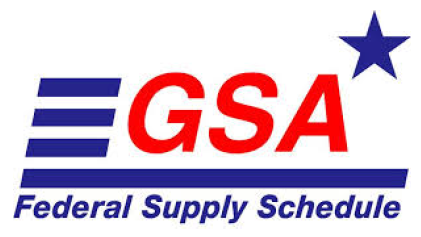
| What: | Federal agencies move to best-in-class contracting and category management |
| When: | “Transforming the Marketplace” memo published by the Office of Federal Procurement Policy in December 2014 |
| Why it matters: | OFPP’s push toward category management turned out not to be just an acquisition policy fad, but one that continues to influence agency procurement decisions to this day. Governmentwide, agencies avoided $16.7 billion in costs through category management in fiscal 2024, nearly 29% above their goal for the year. |

When the government first started its modern journey toward category management almost exactly a decade ago, the goal was relatively easy to describe, if hard to achieve: Reduce the amount of complexity in the federal procurement system.
And while no one would say government purchasing has exactly become simple in the intervening 10 years, category management and best-in-class contracting have done their share of work toward making things better.
As of December 2024, the Office of Management and Budget has now designated 40 separate large acquisition vehicles as best-in-class — representing products and services ranging from rental cars to hearing aids to identity protection services. In some cases, like federal employee air travel, OMB now requires agencies to use the government’s designated best-in-class contract for all of their purchasing in a particular category.

That’s a far cry from where things stood in 2014, when it was more of a norm for multiple federal agencies to have similar contracts for identical purchases, sometimes from the same vendor — and sometimes without realizing it.
“The first problem is that there is very little sharing of information and best practices among federal acquisition units,” Anne Rung, the then-administrator of the Office of Federal Procurement Policy told Federal News Network in December 2014, when OFPP first issued the “Transforming the Marketplace” memo that launched the category management initiative. “So for example, there’s no single place a contracting officer can go to find information about existing government wide contracts. Everyone is acting independently, without a lot of transparency, which leads to a lot of duplication. And our second challenge is that our workforce are required to be jacks of all trades. So they are required to buy, for example, furniture on one day and complex IT systems another day. And that proves particularly challenging for them and for industry.”
Principles persist across three presidencies
In the years since, every president has made category management a component of the President’s Management Agenda, and the prioritization and goal-setting that goes along with that designation has paid off.
By the end of fiscal 2024, $384 billion of the government’s contract obligations — or 78.5% of its total obligations — were meeting the Office of Management and Budget’s criteria for “spend under management,” metrics that show whether agencies are using agency-specific, multi-agency or governmentwide purchasing strategies. That figure has risen substantially since 2020, when $225 billion, or 56.4% of spending was characterized as “under management.”

The highest objective, or “tier,” is to funnel spending toward best-in-class contracts, and for 2024, $66 billion, or 13.6% of total contract spending, fell into the best-in-class spending tier. That was the first year since 2020 when the government met the BIC spending targets OMB set for the year.
But that doesn’t necessarily mean every agency thinks it’s cracked the code on category management. Governmentwide, 13.6% of contract obligations are now going toward best-in-class contracts, but those proportions vary widely from agency to agency.
At the Small Business Administration, BICs account for 45.6% of the agency’s contract spending; at the other end of the spectrum is the Department of Energy, which uses BIC vehicles for just 1% of its obligations. And the preponderance of agencies lie between those two extremes, such as the State Department, which logged 15.5% of its spending toward BICs and 71.9% “under management” of some kind in 2024.
“Most agencies are trying to buy smarter these days and use best-in-class vehicles that are established out there. We’re certainly doing that,” Mike Derrios, the deputy assistant secretary for acquisition and senior procurement executive at the State Department, told Federal News Network in a recent interview. “But the missing ingredient for us, really, and for any agency, is aggregating the demand signal. So how can you look internally at the requirements and identify those opportunities before you go to the best-in-class vehicles? That’s really where we get the best bang for the buck.”
Cost avoidance from category management
But agencies have already shown significant progress toward avoiding contract costs. In 2020, the government logged $13.2 billion in cost avoidances related to category management; that figure had risen to $16.9 billion in 2024.
And at some agencies, best-in-class contracting is still growing by significant percentages, according to dashboard analyses of the Federal Procurement Data System maintained by the General Services Administration. For example, year-over-year, the Social Security Administration increased its use of BICs by 16% in 2024; the Office of Personnel Management saw a nearly 21% boost.
And to a large extent, those increases have been prompted by greater specialization within the government’s acquisition workforce — a move away from the “jack of all trades” approach that was more dominant a decade ago.
“We’re organizing in ways where, for example, we’ll have a group that is focused on all things IT — not just typical IT products and services, but also AI, which is a huge thing these days,” Derrios said. “So we’re trying to build reps within those organizations to be the subject matter experts. We want them to really understand the market, really understand how it works, how fast technology is changing. That way, when they’re working with the customers on developing a strategic sourcing or category management-based approach, it’s not just, ‘Hey, can we aggregate several requirements together and go to industry with a larger buying power in mind?’ It’s also, ‘What do we know about the market? Are we smart enough to really think about how industry will respond to this particular RFP? And have we structured it in a way where it’s easily digestible for them?’”
Copyright
© 2025 Federal News Network. All rights reserved. This website is not intended for users located within the European Economic Area.




